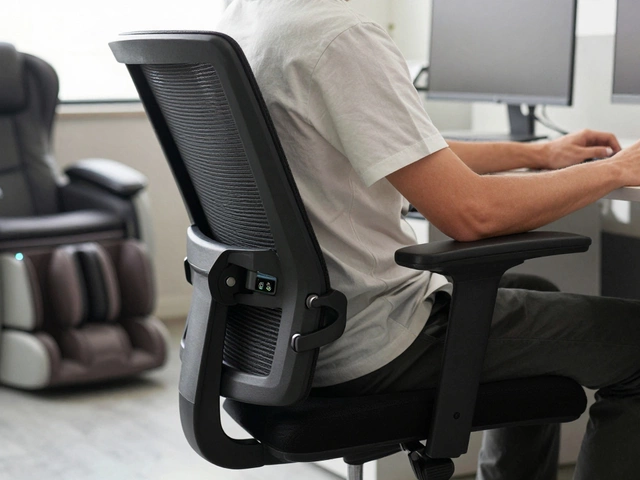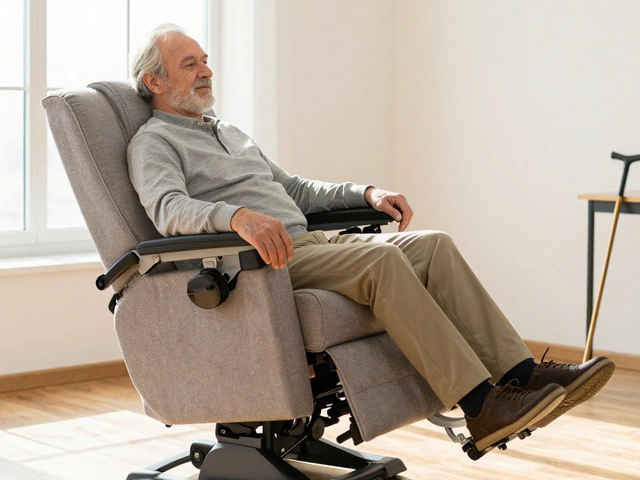Lifestyle Tips for Healthier Living
Whether you’re stuck on the couch, battling daily fatigue, or trying to understand ADHD, the right habits can make a big difference.
Sleep Better on Your Couch
Sleeping on a couch isn’t as rare as you think, but it can strain your back and neck if you ignore a few basics. First, pick a couch with firm support—soft, saggy cushions push your spine out of alignment. Add a thin pillow for neck support and a rolled‑up blanket under your knees to keep the lower back happy. Keep the room cool and dark, just like you would with a bed, to encourage deeper sleep. If you must couch‑sleep regularly, consider a mattress topper that adds a bit of bounce without losing firmness.
Even with these tweaks, couch sleep won’t replace a proper bed forever. Use it as a short‑term solution or a power nap spot, and plan to upgrade to a better sleeping surface when you can. Your body will thank you with fewer aches and more energy.
Managing Daily Sitting and Focus
Sitting all day feels normal for many, but the health risks pile up fast. Prolonged sitting can tighten hip flexors, lower back muscles, and even affect your mood. A simple trick is the “20‑8 rule”: after every 20 minutes of sitting, stand or walk for at least 8 minutes. Stretch your hamstrings, roll your shoulders, and sip water while you’re up. These mini breaks keep blood flowing and reset your focus.
For those who work on a computer, an ergonomic chair or a lift chair can relieve pressure. Lift chairs, especially, are designed to help you rise without straining. If a doctor recommends one for medical reasons, insurance may cover it—just check the prescription details and your policy’s eligibility.
Understanding ADHD symptoms can also improve daily productivity. The three core signs— inattentiveness, impulsivity, and hyperactivity—show up in different ways. Inattentiveness often means losing track of tasks or forgetting appointments. Impulsivity might lead to speaking out of turn or making snap decisions. Hyperactivity can appear as restlessness, fidgeting, or constantly moving. Recognizing these patterns helps you choose strategies like breaking tasks into smaller steps, using timers, or creating a distraction‑free workspace.
Practical tips for managing ADHD include: set clear, written goals; use a planner with reminders; and schedule regular breaks to burn off excess energy. Pair these habits with a comfortable seating setup—think a supportive chair with good lumbar support—to keep both mind and body steady.
In the end, small adjustments in where you sit, how you sleep, and how you handle focus can add up to big health wins. You don’t need a total overhaul; start with one change, like adding a pillow to your couch or standing up every hour, and watch the difference.
Understanding the Three Core Symptoms of ADHD: A Practical Guide
Get to know the three legs of ADHD—what they look like, how they impact daily life, and practical tips for navigating challenges. Simple, real-life guidance.
Is Sleeping on a Couch Every Night Bad for You? Expert Insights & Tips
Get real talk about sleeping on a couch every night: the real effects on your body, tips for making it safer, and why your back might be complaining.
Can Doctors Prescribe Lift Chairs? Insurance, Process & What to Expect
Looking for a lift chair on prescription? Find out how doctors, insurance, and eligibility work for getting a lift chair prescribed for medical use.
Is Sitting All Day Bad? Health Risks, Surprising Facts, and Practical Tips
Wondering if sitting all day is ok? Discover the health risks, eye-opening facts, and simple tips to stay healthy at your desk.








